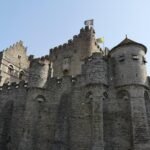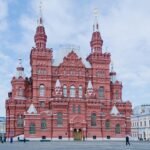Introduction to Oslo:
Oslo is the capital and largest city of Norway, and the third largest in the Scandinavian Peninsula. As the capital, it’s the political, economic, cultural, and commercial hub of Norway. Oslo is nestled right next to vast wilderness areas, sitting at the head of a fjord, with sprawling mountain forests crossing the outskirts of the city. Visitors can hop on the subway to reach ski lifts and nature trails. The city’s urban planning preserves its rich medieval character and distinct Nordic scenery. Even though it’s a major city, you won’t find too many skyscrapers here; most of the streets are lined with 6- or 7-story buildings surrounded by neat lawns and colorful flowers. Oslo hosted the Winter Olympics in 1952 and is also where the Nobel Peace Prize is awarded, with the annual ceremony held at Oslo City Hall.
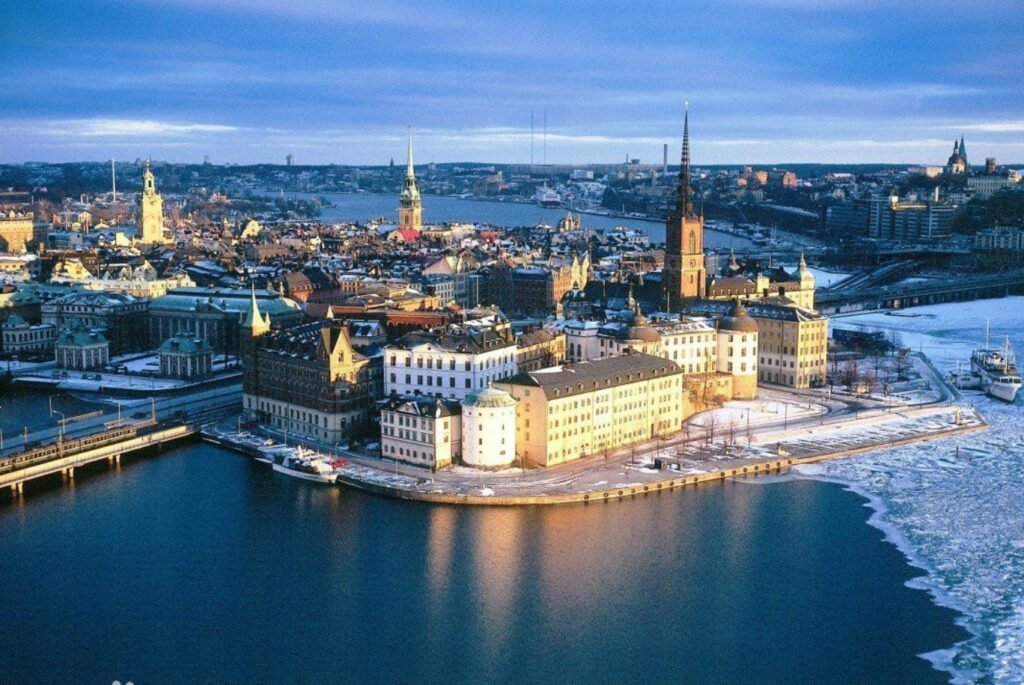
Best Time to Visit:
Late June to early August is when Norway enjoys its warmest weather, with the longest hours of daylight. July and August temperatures can reach between 77°F and 86°F (25°C-30°C). The humidity is also very low, making it an ideal time to visit Norway if you’re not looking for a winter getaway.
Clothing Tips:
It’s a good idea to pack lightweight clothing, layers (so you can add or remove as needed), a warm sweater, a waterproof jacket or umbrella, and comfortable shoes. If you’re visiting in the winter, make sure to bring a heavy coat, scarf, gloves, and insulated shoes. For spring or fall trips, consider waterproof pants and boots, and even in summer, evenings, especially in the mountains, can get chilly.
While Oslo may not be as scenic as Bergen, it does have some fantastic museums like the National Gallery and the Viking Ship Museum. There’s also the famous Vigeland Sculpture Park, a perfect spot for a leisurely stroll.
Oslo Royal Palace:
The Royal Palace is one of Norway’s most iconic landmarks and serves as the office of King Harald. It’s not only the residence of the King and Queen but also the place where the monarch handles daily affairs. The palace has 173 rooms, all elegantly and luxuriously decorated. The gardens are peaceful and winding, while the square in front is the largest celebration square in Norway. During the summer, visitors can join guided tours to explore the palace.
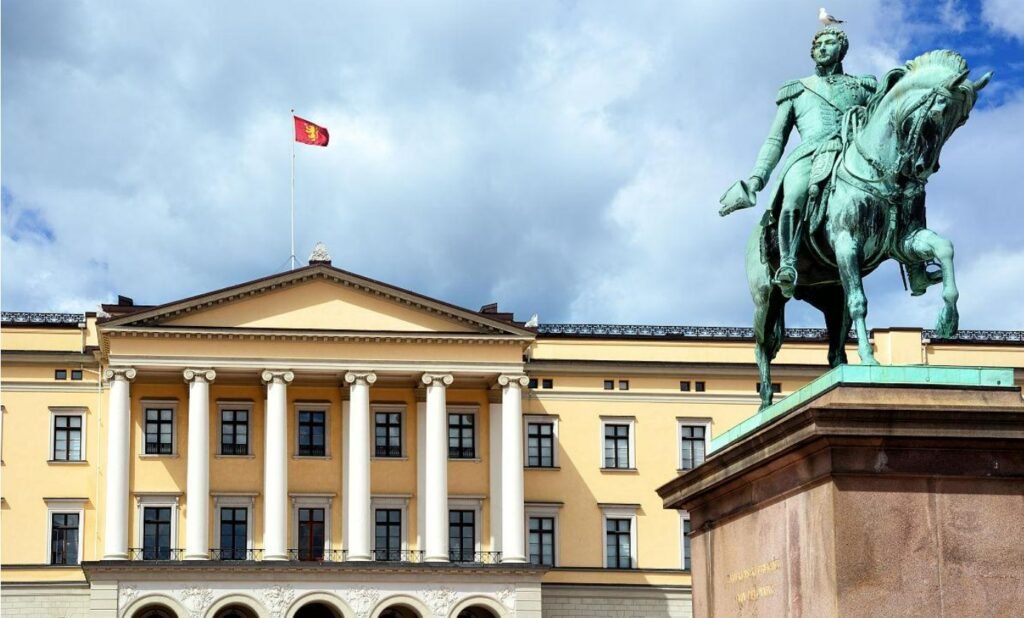
Oslo City Hall:
From the outside, Oslo City Hall might look like a rather serious office building, but inside, the walls of the ceremonial hall are adorned with stunning murals that depict Norwegian history and mythology. Surrounding the city hall, you’ll find numerous sculptures showcasing various aspects of Norwegian life. In addition to Stockholm City Hall, Oslo City Hall is one of the venues where the Nobel Prize is awarded.
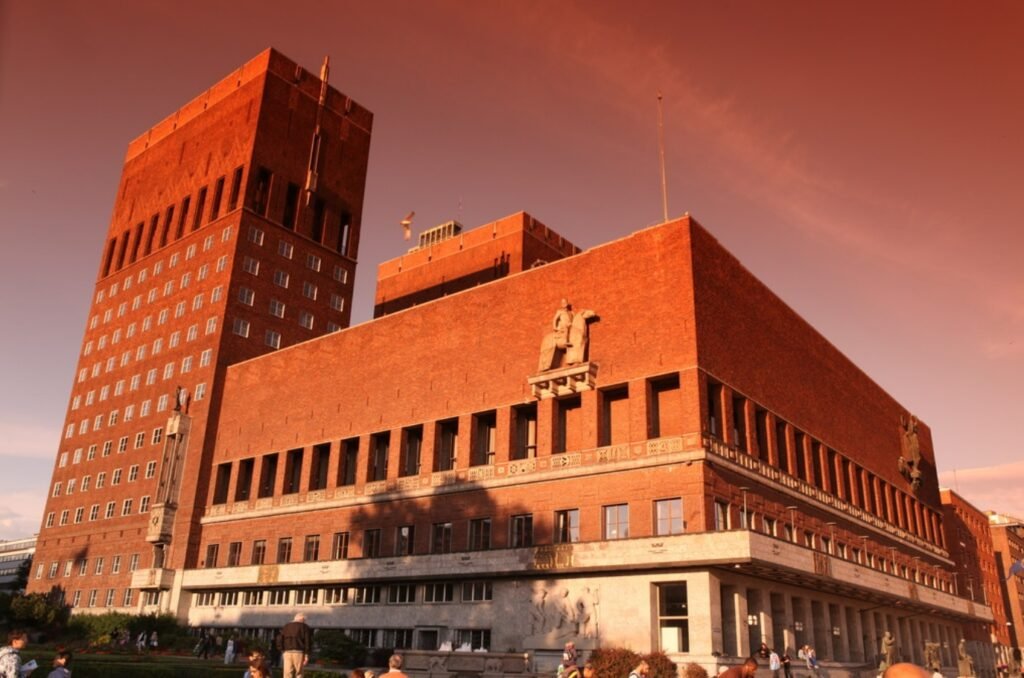
Vigeland Sculpture Park:
Also known as Frogner Park, this sculpture-themed park features 212 works by Norwegian sculptor Gustav Vigeland. The sculptures revolve around the theme of “life and death,” portraying the entire human experience—from birth, through childhood, adolescence, adulthood, and old age, all the way to death. It’s a thought-provoking reflection on the stages of life.

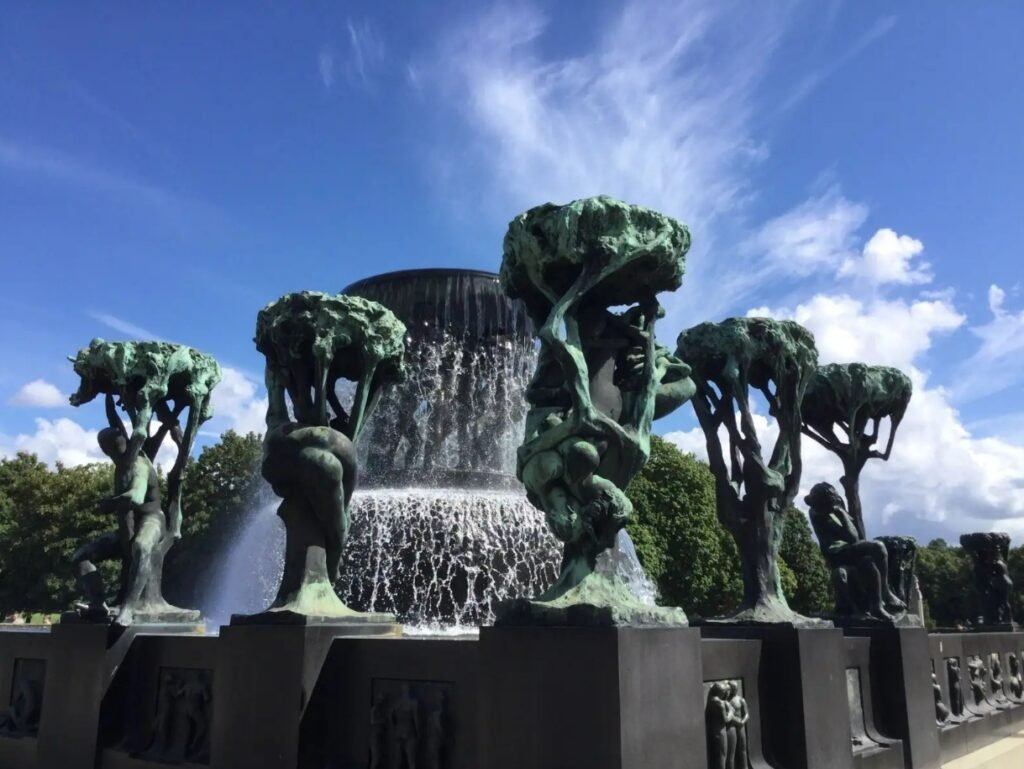
Oslo Opera House:
The Oslo Opera House, located by the Oslo Fjord and near the central station, is an architectural masterpiece designed to resemble a ship. This stunning structure, built from marble and glass, serves as a venue for opera and various cultural events. Visitors can walk up to the roof and take in panoramic views of the city.

Munch Museum:
Fans of Edvard Munch definitely won’t want to miss the Munch Museum. This art museum was built in honor of the famous Norwegian painter Edvard Munch. It houses around 5,000 of his works, including the iconic masterpiece The Scream.


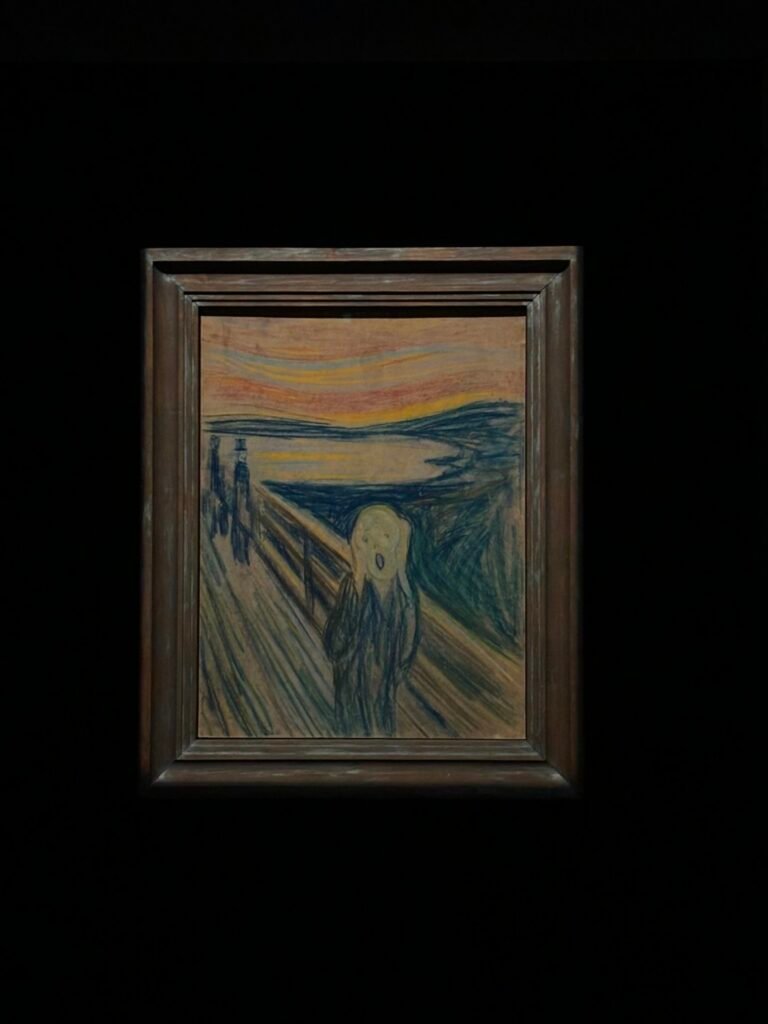

Viking Ship Museum:
The Viking Ship Museum is one of the most popular attractions on the Bygdøy Peninsula. The exhibits feature artifacts discovered in Viking burial sites around the Oslo Fjord area. Inside the museum, you’ll find three Viking ships unearthed from the region, along with numerous other items from Viking life that were recovered.
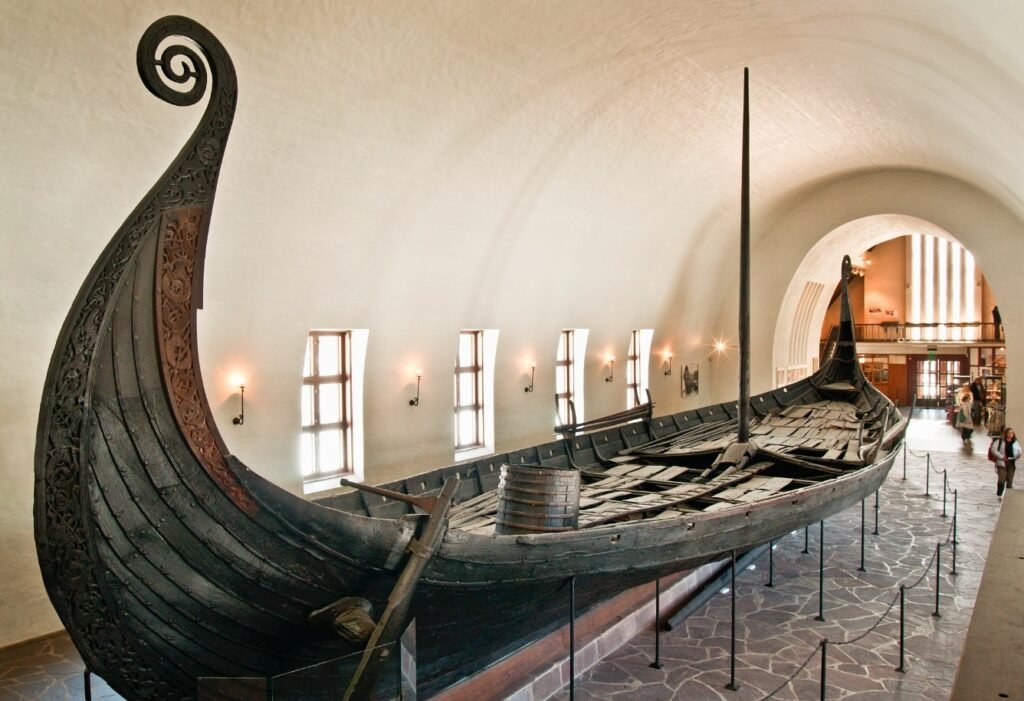
Akershus Fortress:
Akershus Fortress is a medieval castle built to protect the Norwegian capital, Oslo, and also served as a prison. Constructed in the late 13th century by King Håkon V, the fortress still functions as a military area today, hosting official events and welcoming dignitaries from around the world.
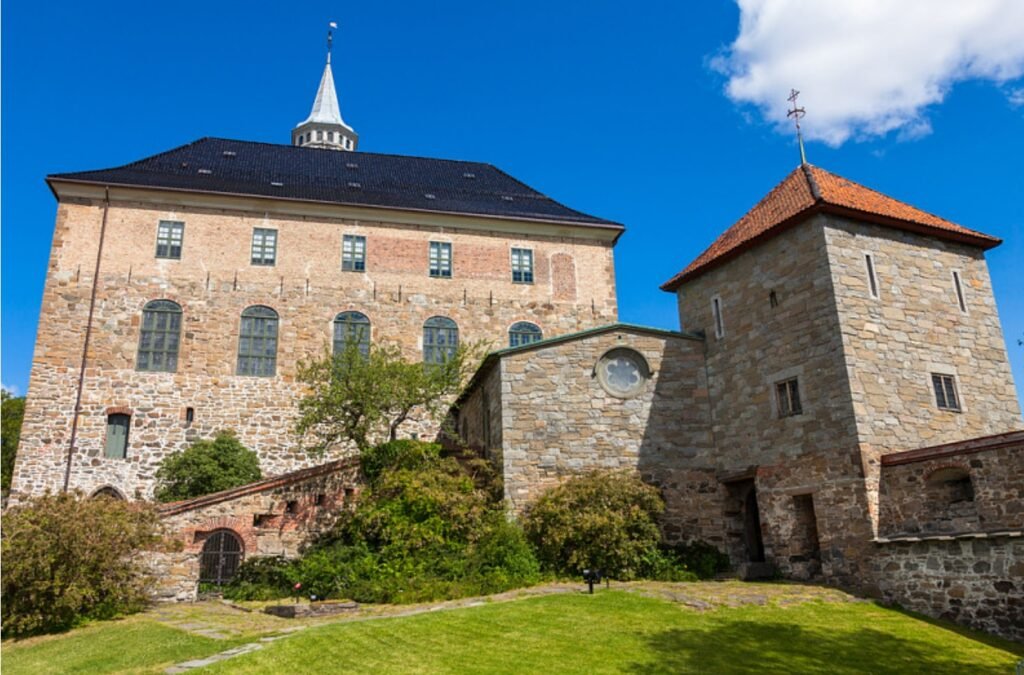
National Gallery:
One of the main highlights in Oslo is the National Gallery. It boasts the largest collection of Norwegian art in the country, featuring works that span from the Romantic period to modern times, covering the years from 1800 to World War II. The gallery houses masterpieces by artists such as Munch, Picasso, El Greco, Manet, Matisse, Cézanne, and Monet.
Nobel Peace Center:
The Nobel Peace Center, established in 2005, is located next to Oslo City Hall, facing the harbor. It houses a collection of materials related to the Nobel Peace Prize. Inside the museum, visitors can learn about the life of Alfred Nobel and find information on all the past laureates.
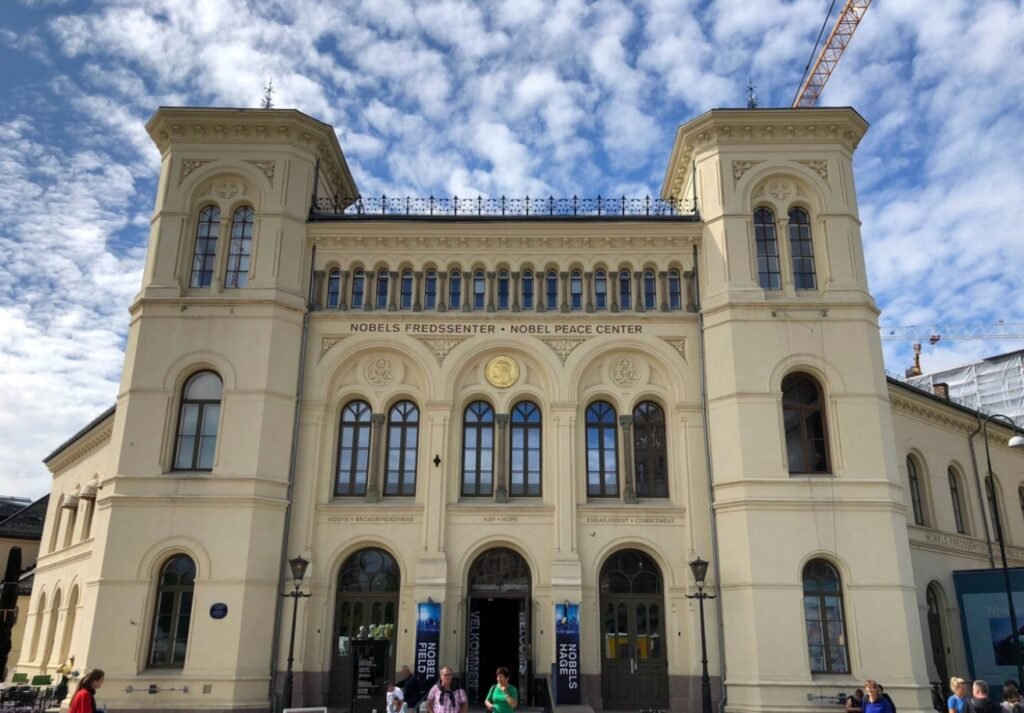
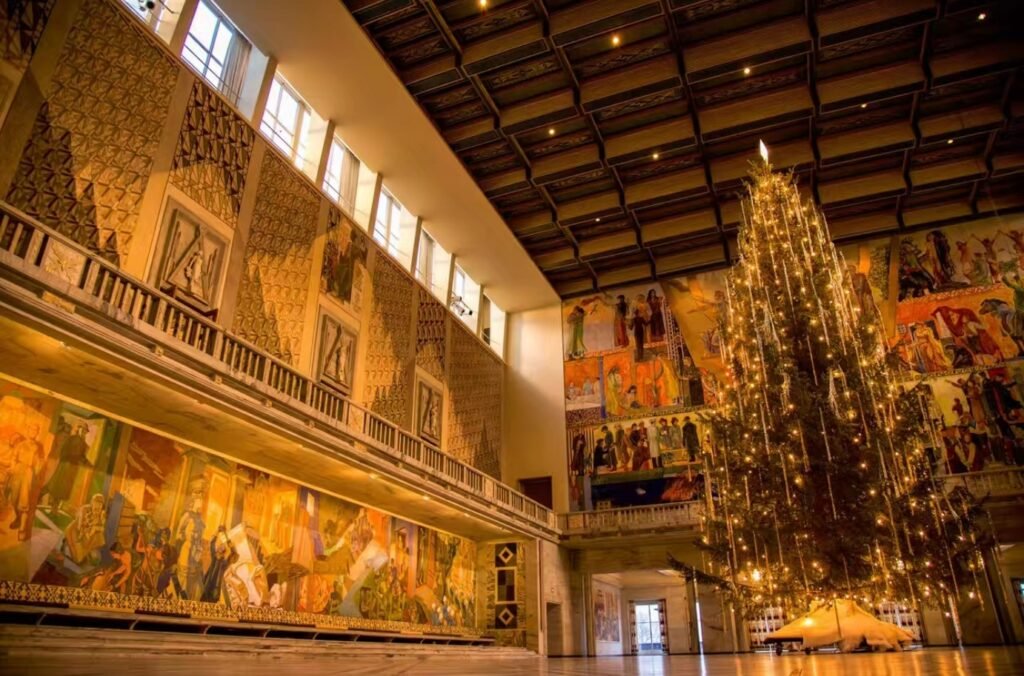
Accommodation Guide:
Oslo offers a wide variety of hotels to meet the diverse needs of travelers across all price ranges. In addition to hotels, you’ll find youth hostels, guesthouses, campsites, and private homes for accommodation. With over 50 hotels available, there’s something to suit every taste and budget. While there’s no official star rating system, the quality of hotels is generally quite high.
Food Guide:
Norway is known for its distinctive cuisine, featuring dishes like roasted and smoked salmon, gravlaks (cured salmon), and a variety of seafood such as cod, monkfish, and halibut, along with whale meat and other seafood options. If you’re a meat lover, you definitely need to try reindeer, elk, moose, or grouse while in Norway. Another Norwegian specialty is brunost, a sweet brown goat cheese that is beloved by people of all ages. For dessert, you can’t go wrong with apple cake served with fresh cream, which is a favorite among Norwegians.
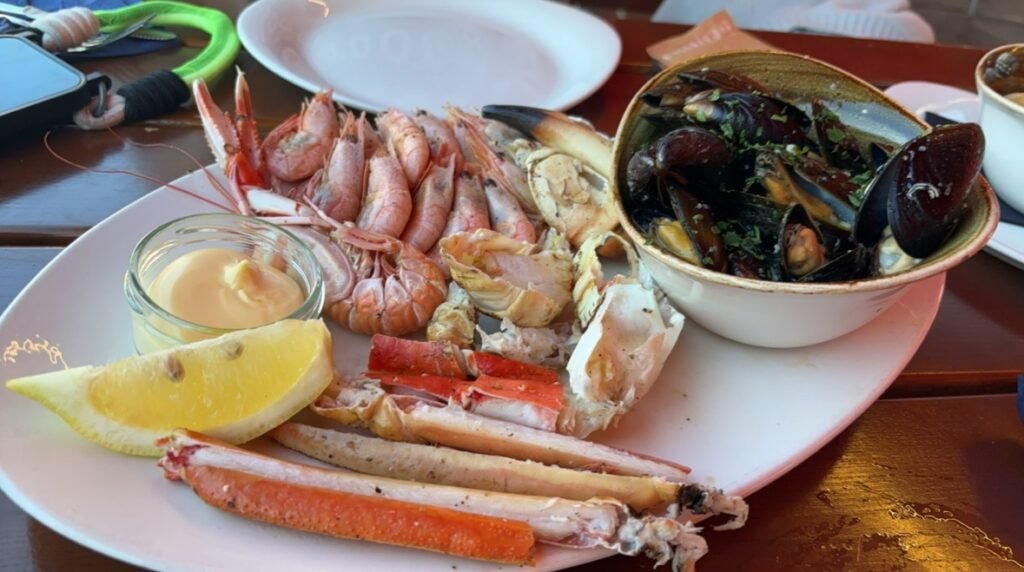


Tour Route Guide:
Oslo can be explored alongside other Nordic countries, making it easy to travel by car or enjoy a convenient cruise.
Nordic Adventure: Four Countries
Day 1: Helsinki
Helsinki, known as the “Daughter of the Baltic Sea,” welcomes you. Upon arrival, check into your hotel and take some time to adjust to the time difference.
Day 2: Helsinki/Stockholm
Start your day by visiting Sibelius Park, named in honor of the famous Finnish composer Jean Sibelius, where you can see the bronze statue of Amanda. Next, take a look at the Parliament House’s impressive exterior. After that, head to Helsinki’s most popular underground rock church, known for its stunning design that resembles a landed spaceship, carved into the rocky hillside. Later, drive to the harbor and board a luxury cruise ship bound for Stockholm.
Day 3: Stockholm
Begin your day by visiting Stockholm City Hall, which was built between 1911 and 1923. Inside, you’ll find the Grand Hall, where the lavish banquet is held each year after the Nobel Prize ceremony in the Blue Hall. Next, head to the Vasa Museum, where you can see the 17th-century warship Vasa, raised from the seabed. This ship is celebrated for showcasing the art and technology of shipbuilding during the 17th century, with its remarkable wooden carvings that are still regarded as a national treasure by the Swedish people.
Day 4: Stockholm – Karlstad – Oslo
After breakfast, set off for Karlstad, a central Swedish city known for its many rivers, lakes, and green spaces, basking in plenty of sunshine. It’s famous for sports and hosting various events. After exploring Karlstad, continue your journey to Oslo, the capital of Norway and one of the world’s top ten capitals. Visit the renowned Vigeland Sculpture Park, where you can admire the lifelike bronze and granite sculptures. Next, take a look at Oslo City Hall, which hosts the Nobel Peace Prize ceremony every year on December 10th, the anniversary of Alfred Nobel’s death. Finally, check out the impressive Akershus Fortress, a medieval castle that has never been conquered.
Day 5: Oslo – Geiranger – Fjord Town
Drive to the picturesque Hardangerfjord for a scenic tour. In Geiranger, take a ferry across the fjord, where you’ll be surrounded by towering mountains, cascading waterfalls, and charming orchards. Immerse yourself in the beauty of Norway and experience the unique elegance of its fjords.
Day 6: Fjord Town – Flåm – Gudvangen – Bergen
Travel to Flåm and board a boat to cruise through the stunning Aurlandsfjord to Gudvangen. Aurlandsfjord is the longest and deepest fjord in the region, stretching 204 kilometers and plunging to a depth of 1,308 meters. It showcases some of nature’s most breathtaking craftsmanship, allowing you to feel like you’ve stepped into a fairy tale. Afterward, drive to Bergen, Norway’s second-largest city, famously known as the “City of the Seven Mountains” due to the seven mountains surrounding it.
Day 7: Bergen – Copenhagen
Take a scenic cable car ride to the top of Mount Fløyen for panoramic views of Bergen. After soaking in the breathtaking sights, explore the charming old town and the bustling fish market. Later, fly to Copenhagen, the romantic capital of Denmark, where the blend of emerging industrial enterprises and medieval architecture creates a city that feels both modern and historic.
Day 8: Copenhagen Sightseeing
Spend the day sightseeing in Copenhagen, starting with the impressive Gefion Fountain. Next, admire the largest dome church in Denmark, the Marble Church, and visit the city’s main gathering place, the City Hall Square. Don’t miss seeing the iconic Little Mermaid statue, a symbol of Copenhagen. After your tour, head to the airport to check in for your return flight.

